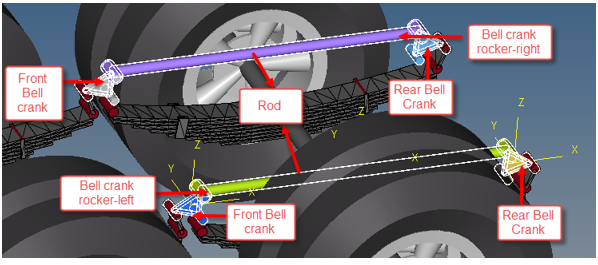Rear Suspension Systems
Rear Suspension supports the rear wheels with the help of a solid axle. There are three types of rear suspensions in the truck library.
Rear Single Axle Suspension
- Leaf Springs
- Rear Single Axle Suspension with Leaf Springs
- The ends of the leaf springs attach directly to the frame, and the shock
absorber is attached at the clamp that holds the spring to the axle.
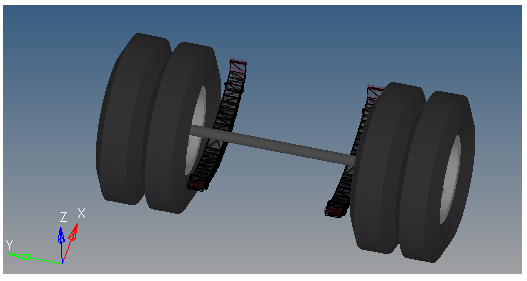
Figure 1.
Rear Single Solid Axle Suspension with Trailing Arm
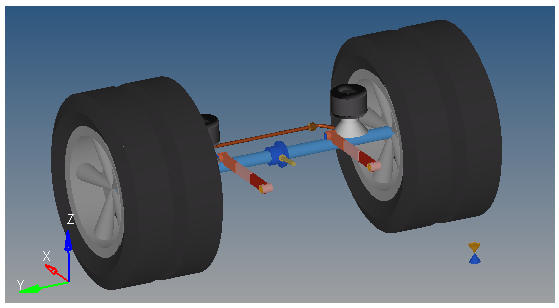
Figure 2.
- Trailing Arm
- Trailing-arm suspension is a design in which one or more arms are
connected between the rear axle and the chassis, toward the front of the
vehicle. This allows the rear to move up and down.
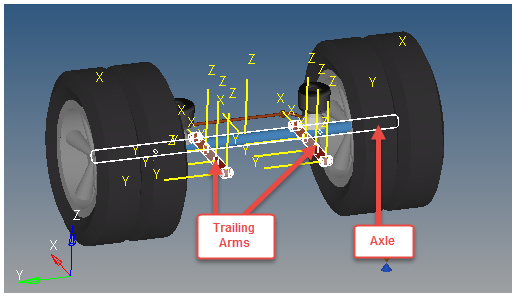
Figure 3. - Air Springs
- An air spring is also included in the suspension and is located at a load transmitting location between one of the trailing arms and the frame.
- Bracket
- A bracket pivotally mounts one end of the trailing arm to the frame of
the vehicle while the other end of the trailing arm is joined to the
frame by a shock absorber and an air spring. Bracket has the effect of
lowering the center of gravity of the suspension and moving the force
resisting any sway as far from the frame as possible.
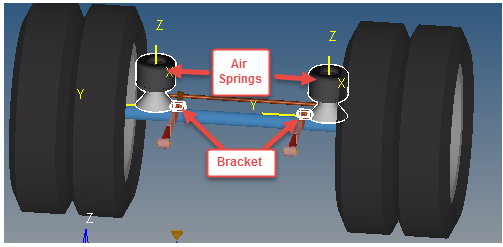
Figure 4.
Rear Dual Axle Suspension
- Bell crank linked leaf springs
- Inverted leaf suspension
- Bell Crank Linked Leaf Springs
- In the bell crank linked leaf springs, two sets of leaf springs are used
and is mounted to the frame at two points. Bell crank rocker is attached
in the rear-rear leaf spring. It is used to convert translational motion
of one object into translational motion of another object operating at
different angles. It acts as an equalizer when the load is applied.

Figure 5. - Inverted Leaf Suspension
- In this suspension, the leaf springs are inverted than the normal leaf
spring suspension. The smallest length leaf springs are attached at the
top and the longest stays at the bottom.
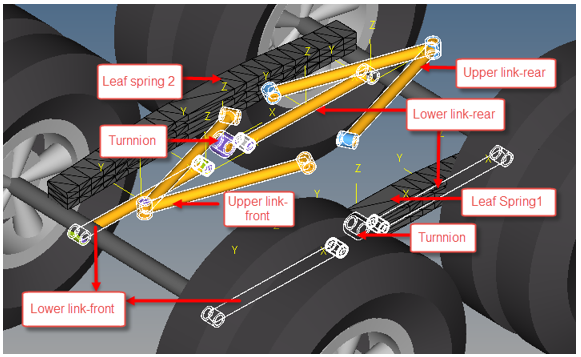
Figure 7.
